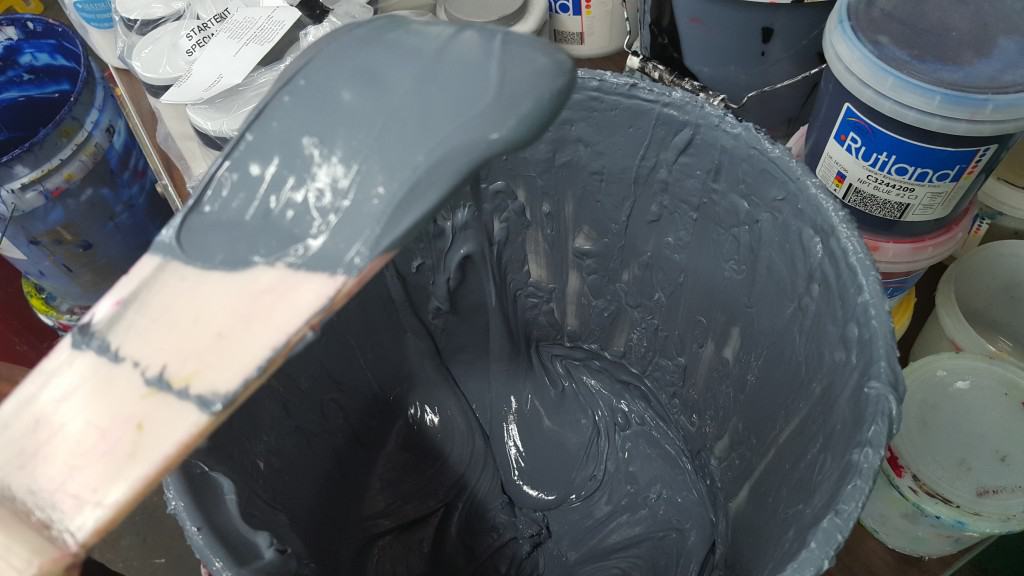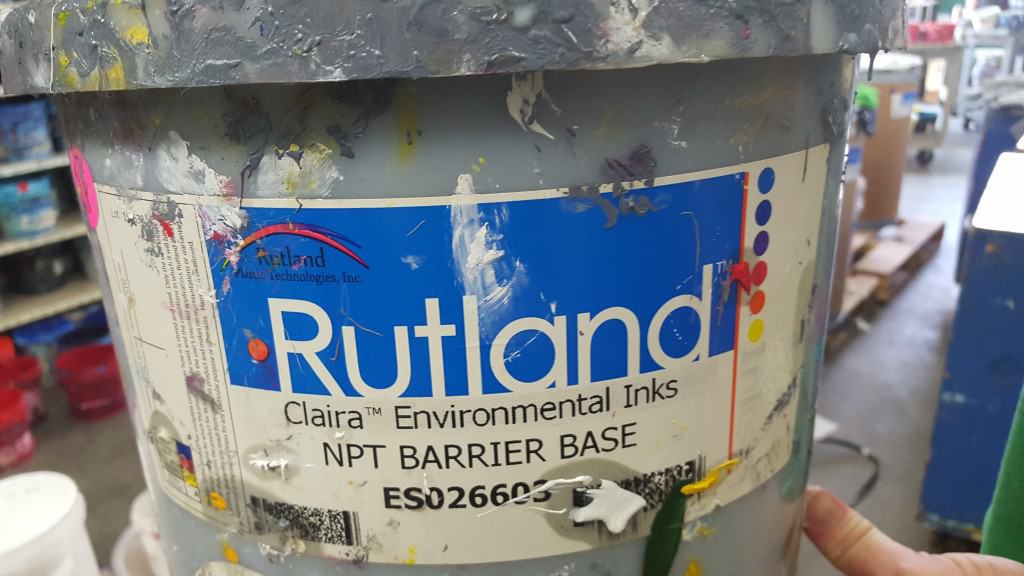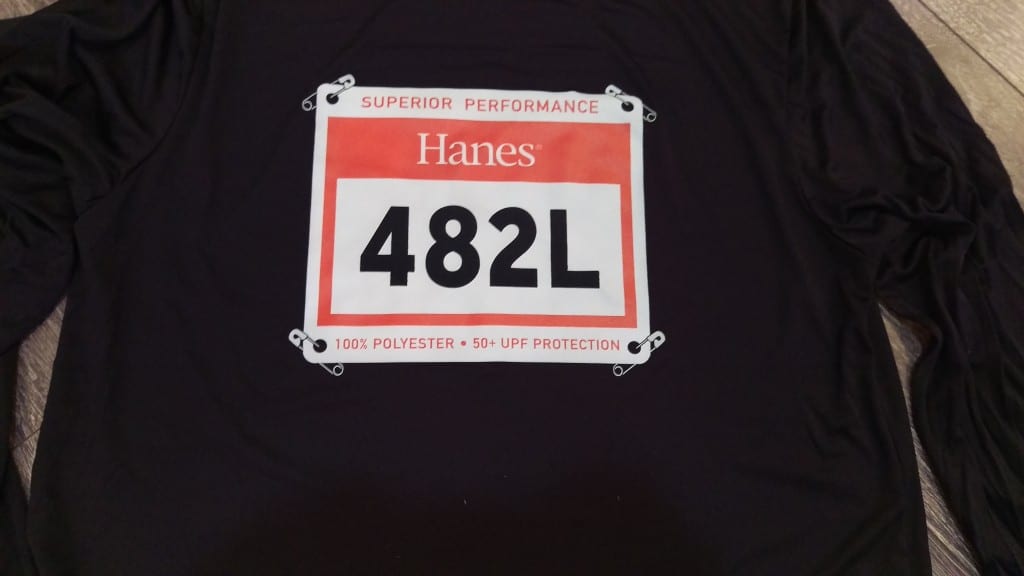So you have a bad bleeding shirt on your hands, now what? Yesterday I went over silicone inks as a possible solution and the pluses and the minuses of that approach. Most often in our shops we reach for Barrier Grey Ink. We use the Rutland version but I believe there are similar products out there. When used properly I have seen it stop dye migration in all cases except for the rare certain sublimated camo shirt. As with all the ink solutions, there are great reasons to use it and also limitations…
On the Plus Side:
– Great at stopping virtually all dye migration in all cases
– Let’s list that again, it stops dye migration on virtually all types of fabrics in nearly every situation. We use it on 100% polys that bleed, on garment dyed shirts that have issues, on crappy 50/50’s, and just about anything we get very worried about and it nearly always works.
– If you know how to print plastisol you know how to print barrier grey, you don’t need any special equipment or settings.
On the Minus Side:
– It prints like plastisol, but like plastisol that concrete has been added to. It is thick and not creamy at all and many printers find it tough to print.
– It will not print at a higher mesh than 160 and works best on lower meshes than that.
– You need a white after it, so for white on a shirt that means printing grey, white, and white again. In other words it takes up lots of stations, always one additional screen and possibly another flash and another cool down.
On the advice side:
– Don’t be tempted to thin it, that can reduce the effectiveness and you don’t want dye migration surprises.
– It is a great “insurance policy” if you are not sure of dye migration issues, as it will almost always protect you.
– Many a printer starts with “I can’t print this stuff,” but eventually you can figure it out if you work at it.






Comments